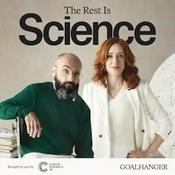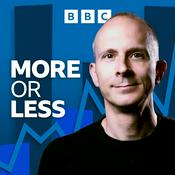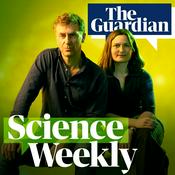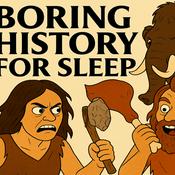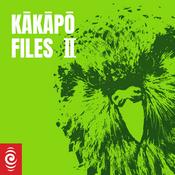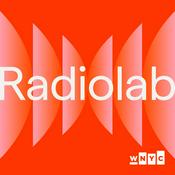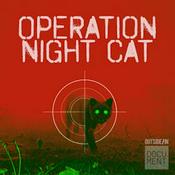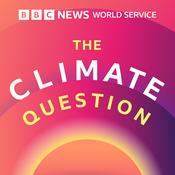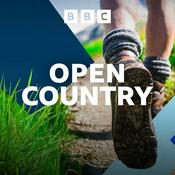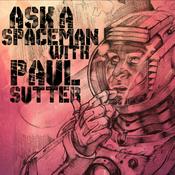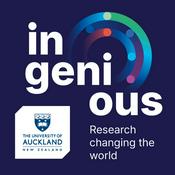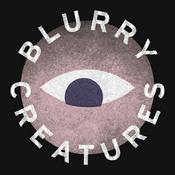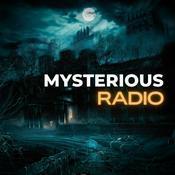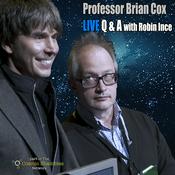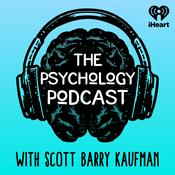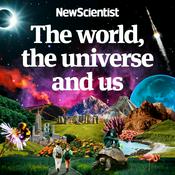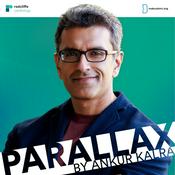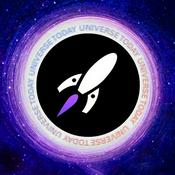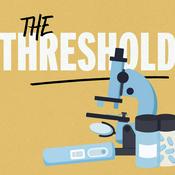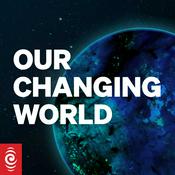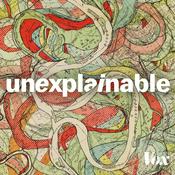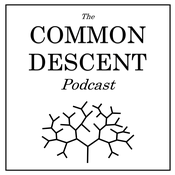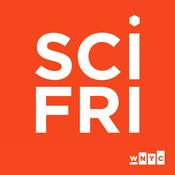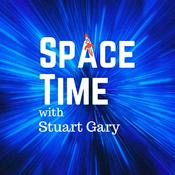240 episodes

Merry Christmas everyone!
24/12/2025 | 4 mins.
I would like to take this opportunity to wish you Merry Christmas, a great time with your families, a bit of rest and time to reflect, and an awesome 2026 to come!If you are desperate for fire science on Christmas Eve, check out the OFR report on open car park fires, which we were able to contribute to: https://www.gov.uk/government/publications/fire-safety-open-sided-car-parks----The Fire Science Show is produced by the Fire Science Media in collaboration with OFR Consultants. Thank you to the podcast sponsor for their continuous support towards our mission.

231 - BESS explosion prevention and mitigation with Lorenz Boeck and Nick Bartlett
17/12/2025 | 59 mins.
Today we cover another branch of safety of Battery Energy Storage Systems (BESS), that is explosion prevention in mitigation. I always thought you can either end with a fire or with an explosion, and boy I was wrong... but we will go back to this later. Now I bring on Dr. Lorenz Boeck (REMBE) and Nick Bartlett (Atar Fire) to unpack how gas released during thermal runaway turns a container into a deflagration hazard, and what it takes to design systems that actually manage the pressure, flame, and fallout. This is a tour through real incident learnings, rigorous lab data, and the evolving standards that now shape best practice.We start with the fundamentals: from the overview given by NFPA855, why modern BESS enclosures—with higher energy density and less free volume—see faster pressure rise, how gas composition varies by cell and manufacturer, and why stratification matters when lighter hydrogen-rich mixtures sit above heavier electrolyte vapors. From there, we translate UL 9540A outputs—gas quantity, composition, flammability limits, burning velocity—into engineering decisions. NFPA 69’s prevention path typically relies on gas detection and mechanical ventilation designed to keep concentrations below 25% LFL, validated with CFD to capture obstructions, sensor placement, fan ramp, and louver timing. NFPA 68’s mitigation path kicks in if ignition happens, with certified vent panels sized to the actual reactivity and geometry, relieving pressure and directing flame away from exposures.A major takeaway: the latest NFPA 855 now often pushes for both prevention and protection. Even with active ventilation, partial-volume deflagration hazards remain, especially as cell capacities rise and gas volumes scale up. We dig into venting trade-offs—roof vs sidewall, snow and hail loading, heat flux to back-to-back units—and how targeted sidewall venting can deflect flame upward while reducing weather vulnerabilities. Perhaps most critical, we talk about late deflagrations observed hours into large-scale fire tests, when changing ventilation conditions allow pockets to ignite. Active systems aren’t built to operate throughout a long fire, so passive venting becomes essential during and after ignition.Whether you’re a fire engineer, AHJ, insurer, or developer, this conversation connects the dots between lab data, CFD, and field realities. You’ll leave with a clearer view of how to apply UL 9540A, NFPA 68, NFPA 69, and NFPA 855 in a world of stacked containers and supersized cells—plus where training can shorten your learning curve. If you are interested by the course given by colleagues in Lund in January 2026 - here it is: https://www.atarfire.com/event-details/nfpa-855-8-hour-training-lund-university----The Fire Science Show is produced by the Fire Science Media in collaboration with OFR Consultants. Thank you to the podcast sponsor for their continuous support towards our mission.

230 - Wind driven conflagration experiments with Faraz Hedayati
10/12/2025 | 51 mins.
A facility with 105 synchronized fans pushing hurricane-class wind across a full-size house while a live fire... This is not science fiction - this is a real research capacity that helps us re-shape our knowledge on the full scale building ignition, fire spread, and failure. That’s the stage at IBHS, where we dig into how wind-driven fire behave differently to small-scale and how tiny choices around a building can decide its fate. Together with my guest - dr Faraz Hedayati, we go from embers generation and fire spread studies, to urban conflagration research.We start with embers, the quiet culprits behind so many structure losses in the WUI. Embers aren’t a single threat but a spectrum of sizes, temperatures, and lifetimes that ride shifting eddies and stall in stagnation zones. We talk through what full-scale tests reveal: glowing ember lines at the base of walls, roof reattachment zones where deposits spike, and the hard truth that counting particles matters less than controlling where they land. The guidance is clear and actionable—noncombustible vertical clearance, hardened vents, defensible space within the first five feet—because under wind, any component can become the first domino.Then we tackle conflagration: how a spot fire becomes a neighborhood problem. IBHS’s shed-to-structure and fully furnished burns show exposure arriving in pulses, not a smooth curve. Collapse chokes flames and then reinvigorates them, creating multiple peaks where materials succeed or fail on a timer. We compare 30 mph to 60 mph winds and see how plumes lose buoyancy, flatten into the target, soften vinyl frames, and push glazing inward. Separation distance emerges as a decisive lever: around 10 feet, continuous flame contact dominates; at 20 feet and beyond, exposure becomes intermittent and materials can win—unless “connected fuels” like vehicles, fences, and decks bridge the gap.The takeaway isn’t a silver bullet. It’s a layered defense: control embers, clean the near-wall zone, harden openings, choose noncombustible claddings, and increase spacing where possible. Small-scale testing and modeling still matter, but wind-driven fire demands validation at full scale to catch the peaks, the collapses, and the failure modes no bench setup can mimic. If you care about wildfire resilience, urban design, or building safety, this conversation offers a rare, data-rich look at how communities ignite—and how we can change the odds.Learn more about IBHS research at https://ibhs.org/risk-research/wildfire/Cover picture courtesy of dr Faraz Hedayati.----The Fire Science Show is produced by the Fire Science Media in collaboration with OFR Consultants. Thank you to the podcast sponsor for their continuous support towards our mission.

229 - Learning from 900 fires with Björn Maiworm
03/12/2025 | 1h 1 mins.
What can you learn after processing observations across 900 severe fires? A lot. Actually, I will send you to the paper straight away:Evaluating 900 Potentially Harming Fires in Germany: Is the Prescriptive Building Code Effective? German Fire Departments Assessed Fire Safety Measures in Buildings Through On-Site Inspections And now let's dissect this. We sit down with Björn Maiworm of the Munich Fire Department to unpack a decade of structured observations from more than 2,000 significant incidents (900 in the paper but the database already grew!) across Germany—and the results may challenge the assumptions of Fire Safety Engineers. Smoke spread shows up as way more common, despite that legislation should prevent it, and is often seen breaching beyond the apartment of origin when doors are left open, self-closers are defeated, or vertical shafts pull hot gases to the top floor. Meanwhile, true flame spread between units is relatively rare, suggesting that basic compartmentation and detailing are quiet success stories.We also talk about people. Injuries appear in roughly a third of these consequential fires and fatalities in 6 to 7 percent, with risk concentrated in prisons, elder care, and dense low-income housing. Building age isn’t the driver; height and social factors are. Where self-closing doors are mandated and maintained, smoke infiltration to stairs drops—just not as far as theory predicts, thanks to behavior and upkeep realities. That gap between paper and practice is where small, targeted fixes make the biggest difference.On emerging risks, the data draws sharp lines. Mass timber’s challenge isn’t fire resistance; it’s the speed and multi-floor spread when exposed surfaces meet window plumes. The result can outpace practical firefighting capacity. By contrast, shifting a typical household to an EV, PV, and home battery can reduce overall fire probability; the true hazards arise from poor products, DIY installs, and dense storage arrangements. The smart response is segmentation and simple physical breaks that buy time, not blanket bans or panic.We close by reframing fire safety as a complex system problem. Instead of chasing perfect proofs, we can use continuous field feedback to find the leverage points: doors that stay shut, shafts treated as priority risks, vulnerable occupancies protected with tailored measures, and dispatch data that points crews to the right entrance first. If this resonates, subscribe, share the episode with a colleague, and leave a review telling us which finding surprised you most. Your feedback helps more engineers, firefighters, and policymakers turn real-world lessons into safer buildings.----The Fire Science Show is produced by the Fire Science Media in collaboration with OFR Consultants. Thank you to the podcast sponsor for their continuous support towards our mission.

228 - Quantifying the expected utility of fire tests with Andrea Franchini
26/11/2025 | 53 mins.
What do you expect from running a fire test? I would hope that it improves my state of knowledge. But do they do this? We often pursue them blindly, but it seems there is a way to do this in an informed way. In this episode we explore a rigorous, practical way to select and design experiments by asking a sharper question: which test delivers the most decision-changing information for the least cost, time, and impact. With Dr. Andrea Franchini of Ghent University, we unpack a Bayesian framework that simulates possible outcomes before you touch a sample, updates your state of knowledge, and quantifies the utility of that update as uncertainty reduction, economic value, or environmental benefit.First, we reframe testing around information gain. Starting from a prior distribution for the parameter you care about, we model candidate experiments and compute how each would shift the posterior. The gap between prior and posterior is the signal; diminishing returns tell you when to stop. In the cone calorimeter case on PMMA ignition time, early trials yield large gains, then the curve flattens, revealing a rational stopping point and a transparent way to plan sample counts and budgets. The same structure scales from simple statistical models to high-fidelity or surrogate models when physics and geometry matter.Then we tackle a post-fire decision with real financial stakes: repair a reinforced concrete slab, or accept residual risk. We connect Eurocode-based thermal analysis to two test options—rebound hammer temperature proxies and discoloration depth—and compute their value of information. By translating updated probabilities of exceeding 600°C into expected costs of repair versus undetected failure, we show how to choose the test that pays back the most. In the studied scenario, the rebound hammer provides higher value, even after accounting for testing costs, but the framework adapts to different buildings, cost ratios, and risk appetites.Beyond pass-fail, this approach helps optimize sensor layouts, justify added instrumentation, and balance multiple objectives—uncertainty, money, and environmental impact—without slipping into guesswork. If you’re ready to move from ritual testing to evidence that changes outcomes, this conversation maps the path. Papers to read after this:Which test is the best? Choosing the fire test that maximizes the information gainQuantifying the expected utility of fire tests and experiments before execution----The Fire Science Show is produced by the Fire Science Media in collaboration with OFR Consultants. Thank you to the podcast sponsor for their continuous support towards our mission.
More Science podcasts
Trending Science podcasts
About Fire Science Show
Listen to Fire Science Show, Hidden Brain and many other podcasts from around the world with the radio.net app
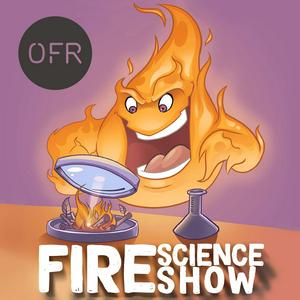
Get the free radio.net app
- Stations and podcasts to bookmark
- Stream via Wi-Fi or Bluetooth
- Supports Carplay & Android Auto
- Many other app features
Get the free radio.net app
- Stations and podcasts to bookmark
- Stream via Wi-Fi or Bluetooth
- Supports Carplay & Android Auto
- Many other app features


Fire Science Show
download the app,
start listening.

